Low-Fidelity Prototyping with Design Thinking in Higher Education Management in Japan: Impact on the Utility and Usability of a Student Exchange Program Brochure
Abstract
1. Introduction
1.1. Problem and Purpose of this Study
1.1.1. Is Low Fidelity Prototyping in Design Thinking Effective in Enhancing Both the Utility and Usability of a Brochure? (RQ1)
1.1.2. How Is DT Effective in Identifying and Mitigating Cognitive Biases? (RQ2)
1.2. Context
1.2.1. Government Incentives for Increasing Outbound Student Numbers
1.2.2. Comparing Student Mobility of UT with Partner Universities
1.3. Definition and Scope of Design Thinking in This Study
2. Methodology
2.1. Participants
2.2. Procedures
2.3. Data Collection
2.4. Data Analysis
2.4.1. Quantitative Analysis
2.4.2. Qualitative Analysis
3. Results
3.1. Utility/Content
3.2. Usability/Design
4. Discussion
4.1. RQ 1. Is Low Fidelity Prototyping in Design Thinking Effective in Enhancing Both the Utility and Usability of a Brochure?
4.2. RQ 2. How Is DT Effective in Identifying and Mitigating Cognitive Biases?
5. Conclusions
Author Contributions
Funding
Institutional Review Board Statement
Informed Consent Statement
Data Availability Statement
Conflicts of Interest
Appendix A

Appendix B
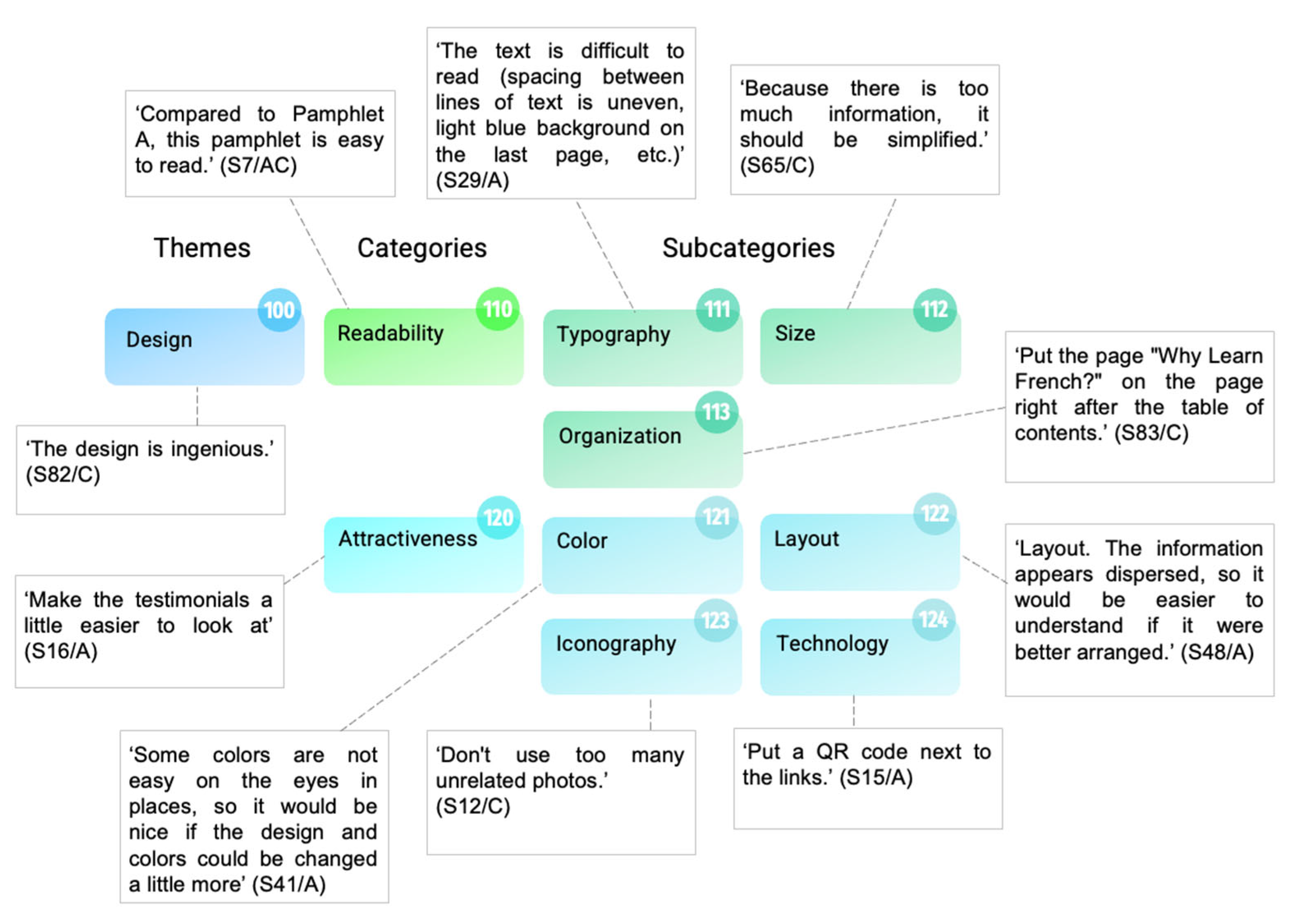
References
- Black, A. Visible planning on paper and on screen: The impact of working medium on decision-making by novice graphic designers. Behav. Inf. Technol. 1990, 9, 283–296. [Google Scholar] [CrossRef]
- Landay, J.A.; Myers, B.A. Sketching interfaces: Toward more human interface design. Computer 2001, 34, 56–64. [Google Scholar] [CrossRef]
- Wong, Y.Y. Rough and ready prototypes: Lessons from graphic design. In Proceedings of the Posters and Short Talks of the 1992 SIGCHI Conference on Human Factors in Computing Systems, Monterey, CA, USA, 3–7 May 1992; pp. 83–84. [Google Scholar] [CrossRef]
- Newman, M.W.; Landay, J.A. Sitemaps, storyboards, and specifications: A sketch of web site design practice. In Proceedings of the 3rd Conference on Designing Interactive Systems: Processes, Practices, Methods, and Techniques, New York, NY, USA, 17–19 August 2000; pp. 263–274. [Google Scholar] [CrossRef]
- Nissinen, T. User Experience Prototyping—A Literature Review. Bachelor’s Thesis, University of Oulu, Oulu, Finland, 2015. [Google Scholar]
- Lim, Y.K.; Stolterman, E.; Tenenberg, J. The anatomy of prototypes: Prototypes as filters, prototypes as manifestations of design ideas. ACM Trans. Comput.-Hum. Interact. (TOCHI) 2008, 15, 1–27. [Google Scholar] [CrossRef]
- Nielsen, J. Usability 101: Introduction to Usability. Nielsen Norman Grp. 2012. Available online: https://www.nngroup.com/articles/usability-101-introduction-to-usability/ (accessed on 3 June 2022).
- Liedtka, J. Perspective: Linking design thinking with innovation outcomes through cognitive bias reduction. J. Prod. Innov. Manag. 2015, 32, 925–938. [Google Scholar] [CrossRef]
- Lande, M.; Leifer, L. Prototyping to learn: Characterizing engineering students’ prototyping activities and prototypes. In Proceedings of the ICED 09, the 17th International Conference on Engineering Design, Palo Alto, CA, USA, 24–27 August 2009; pp. 507–516. [Google Scholar]
- Van Boven, L.; Dunning, D.; Loewenstein, G. Egocentric empathy gaps between owners and buyers: Misperceptions of the endowment effect. J. Personal. Soc. Psychol. 2000, 79, 66. [Google Scholar] [CrossRef]
- Mariampolski, H. The power of ethnography. J. Mark. Res. Soc. 1999, 41, 1–12. [Google Scholar] [CrossRef]
- Knight, J. Internationalization: Elements and Checkpoints. CBIE Research, 1 January 1994. [Google Scholar]
- Knight, J. Internationalization: A decade of changes and challenges. International Higher Education, 9 January 2008. [Google Scholar] [CrossRef]
- Ota, H. Internationalization of higher education: Global trends and Japan’s challenges. Educ. Stud. Jpn. 2018, 12, 91–105. [Google Scholar] [CrossRef]
- Yonezawa, A. Challenges of the Japanese higher education amidst population decline and globalization. Glob. Soc. Educ. 2020, 18, 43–52. [Google Scholar] [CrossRef]
- Kuroda, K.; Sugimura, M.; Kitamura, Y.; Asada, S. Internationalization of Higher Education and Student Mobility in Japan and Asia; Background Paper for the 2019 Global Education Monitoring Report: Migration, Displacement, And Education; UNESCO: London, UK, 2018. [Google Scholar]
- JASSO. Results of the 2020 Survey of Japanese Students Studying Abroad. 2022, pp. 1–7. Available online: https://www.studyinjapan.go.jp/ja/_mt/2022/11/date2020n.pdf (accessed on 17 May 2022). (In Japanese).
- Gardner, L. Can design thinking redesign higher ed. The Chronicle of Higher Education, 10 September 2017; Volume 64. [Google Scholar]
- Reneau, C.M. Empathy by Design: The Higher Education We Now Need. In Achieving Equity in Higher Education Using Empathy as a Guiding Principle; IGI Global: Hershey, PA, USA, 2022; pp. 121–140. [Google Scholar]
- Vaugh, T.; Finnegan-Kessie, T.; Donnellan, P.; Oswald, T. The potential of design thinking to enable change in higher education. All Irel. J. High. Educ. 2020, 12, 3. [Google Scholar]
- Vaugh, T.; Finnegan-Kessie, T.; White, A.; Baker, S.; Valencia, A. Introducing Strategic Design in Education (SDxE): An approach to navigating complexity and ambiguity at the micro, meso and macro layers of Higher Education Institutions. High. Educ. Res. Dev. 2022, 41, 116–131. [Google Scholar] [CrossRef]
- IDEO Design Thinking. Available online: https://designthinking.ideo.com/ (accessed on 30 June 2022).
- Martin, R. The Design of Business: Why Design Thinking Is the Next Competitive Advantage; Harvard Business Press: Boston, MA, USA, 2009. [Google Scholar]
- Micheli, P.; Wilner, S.J.; Bhatti, S.H.; Mura, M.; Beverland, M.B. Doing design thinking: Conceptual review, synthesis, and research agenda. J. Prod. Innov. Manag. 2019, 36, 124–148. [Google Scholar] [CrossRef]
- Johansson-Sköldberg, U.; Woodilla, J.; Çetinkaya, M. Design thinking: Past, present, and possible futures. Creat. Innov. Manag. 2013, 22, 121–146. [Google Scholar] [CrossRef]
- Simon, H.A. The Sciences of the Artificial, Reissue of the Third Edition with a New Introduction by John Laird; MIT Press: Cambridge, MA, USA, 2019. [Google Scholar]
- Brown, T.; Wyatt, J. Design thinking for social innovation. Dev. Outreach 2010, 12, 29–43. [Google Scholar] [CrossRef]
- Lewrick, M.; Link, P.; Leifer, L. The Design Thinking Toolbox: A Guide to Mastering the Most Popular and Valuable Innovation Methods; John Wiley & Sons: Hoboken, NJ, USA, 2020. [Google Scholar]
- Bendig, A.W. Transmitted information and the length of rating scales. J. Exp. Psychol. 1954, 47, 303–308. [Google Scholar] [CrossRef] [PubMed]
- Garner, W.R. Rating scales. Discriminability and information transmission. Psychol. Rev. 1960, 67, 343–352. [Google Scholar] [CrossRef]
- O’Connor, C.; Joffe, H. Intercoder reliability in qualitative research: Debates and practical guidelines. Int. J. Qual. Methods 2020, 19, 1–13. [Google Scholar] [CrossRef]
- MacPhail, C.; Khoza, N.; Abler, L.; Ranganathan, M. Process guidelines for establishing intercoder reliability in qualitative studies. Qual. Res. 2016, 16, 198–212. [Google Scholar] [CrossRef]
- Campbell, J.L.; Quincy, C.; Osserman, J.; Pedersen, O.K. Coding in-depth semistructured interviews: Problems of unitization and intercoder reliability and agreement. Sociol. Methods Res. 2013, 42, 294–320. [Google Scholar] [CrossRef]
- Burla, L.; Knierim, B.; Barth, J.; Liewald, K.; Duetz, M.; Abel, T. From text to codings: Intercoder reliability assessment in qualitative content analysis. Nurs. Res. 2008, 57, 113–117. [Google Scholar] [CrossRef]
- Joffe, H.; Yardley, L. Content and thematic analysis. In Research Methods for Clinical and Health Psychology; Marks, D.F., Yardley, L., Eds.; Sage Publications: Southend Oaks, CA, USA, 2003; pp. 56–68. [Google Scholar]
- MacQueen, K.M.; McLellan, E.; Kay, K.; Milstein, B. Code- book development for team-based qualitative analysis. CAM J. 1998, 10, 31–36. [Google Scholar] [CrossRef]
- Ismailov, M.; Ono, Y. Assignment design and its effects on Japanese College Freshmen’s motivation in L2 emergency online courses: A qualitative study. Asia-Pac. Educ. Res. 2021, 30, 263–278. [Google Scholar] [CrossRef]
- Wiklund, M.E.; Thurrott, C.; Dumas, J.S. Does the fidelity of software prototypes affect the perception of usability? Proc. Hum. Factors Soc. Annu. Meet. 1992, 36, 399–403. [Google Scholar] [CrossRef]
- Kahneman, D.; Knetsch, J.L.; Thaler, R.H. Experimental tests of the endowment effect and the Coase theorem. J. Political Econ. 1990, 98, 1325–1348. [Google Scholar] [CrossRef]
- Verganti, R. Radical design and technology epiphanies: A new focus for research on design management. J. Prod. Innov. Manag. 2011, 28, 384–388. [Google Scholar] [CrossRef]
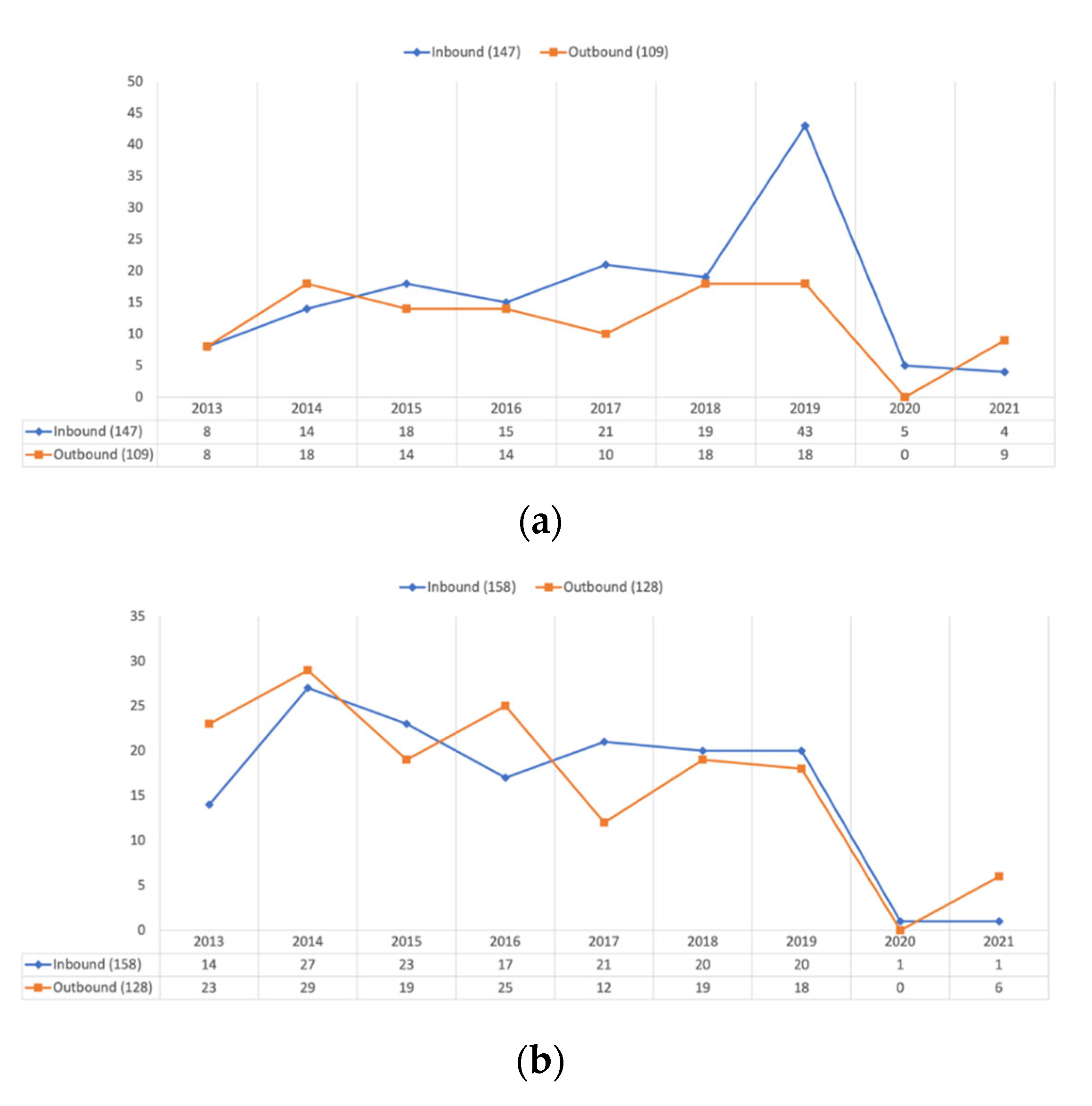
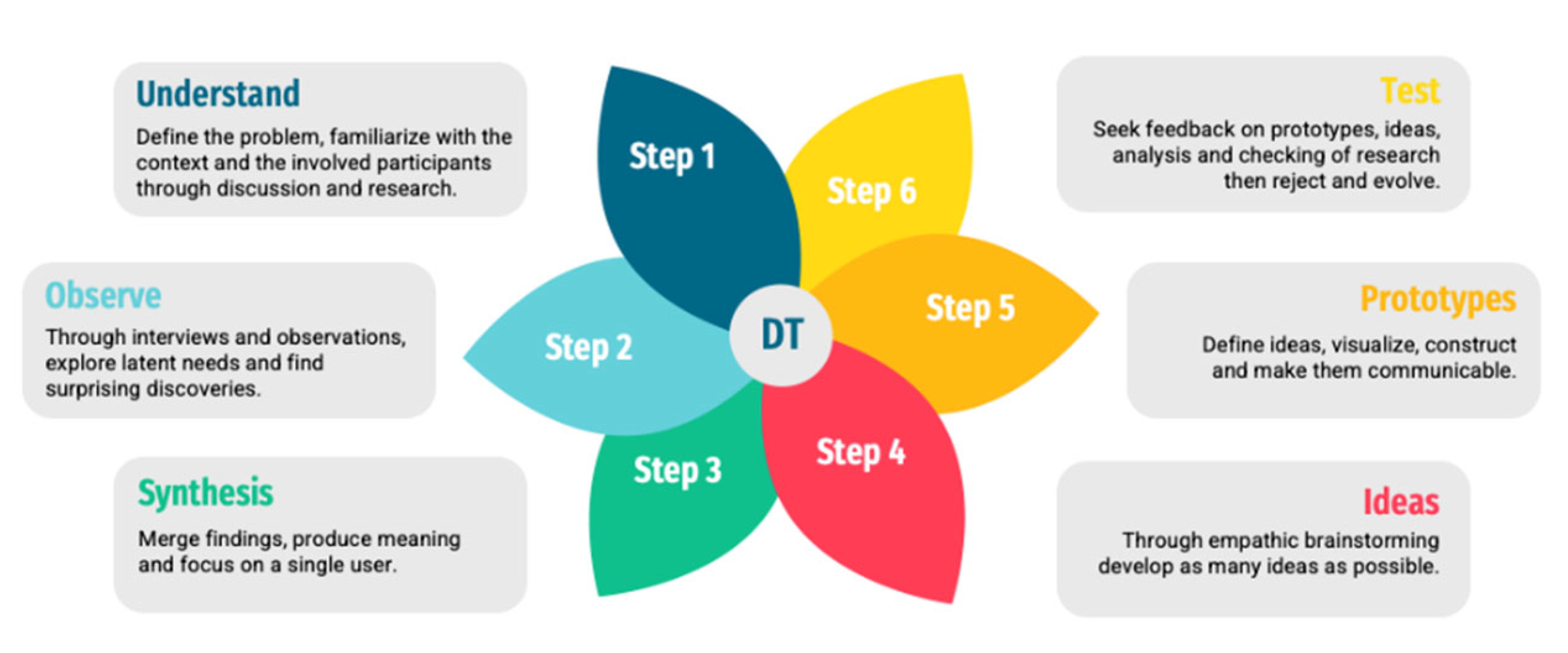
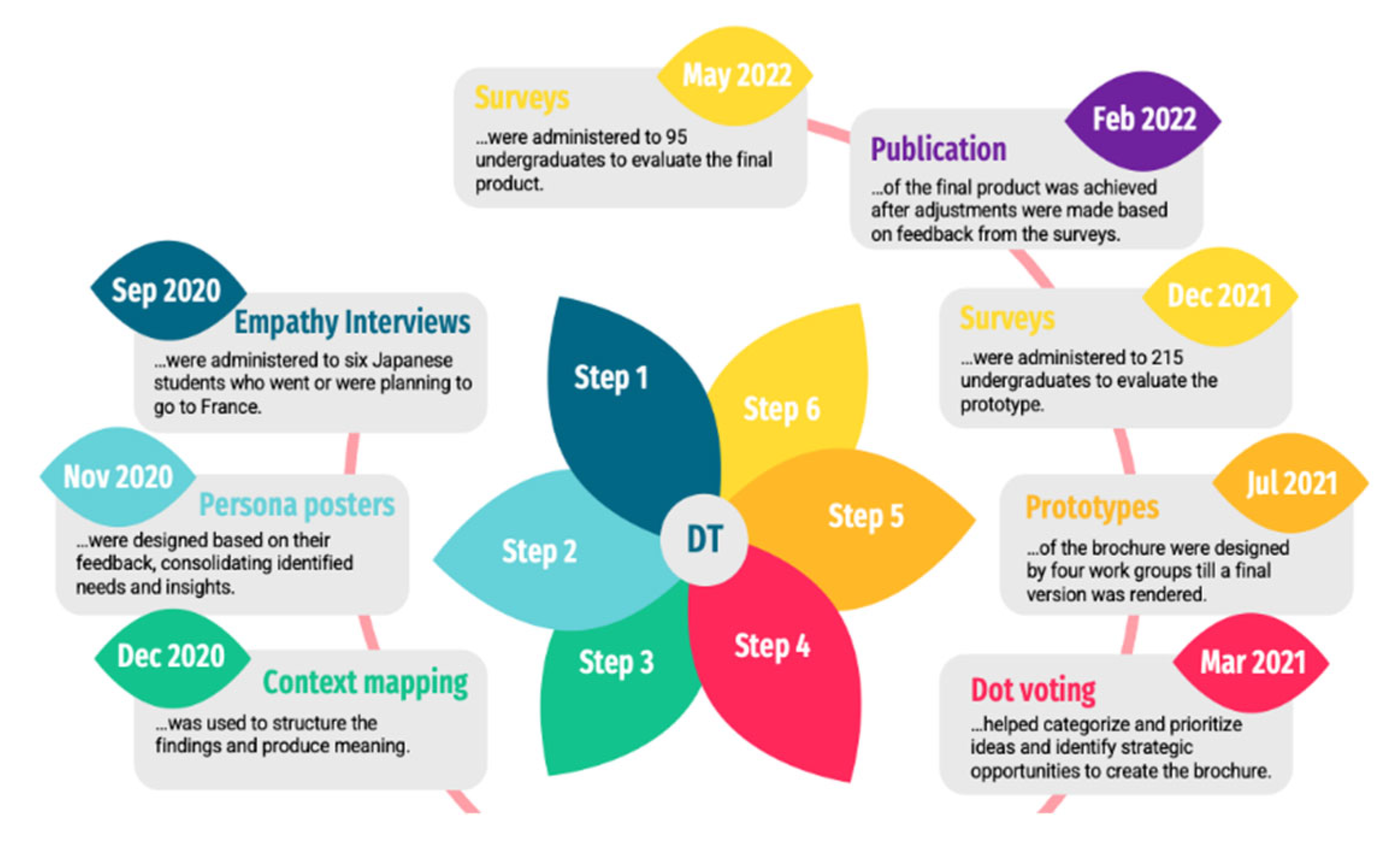
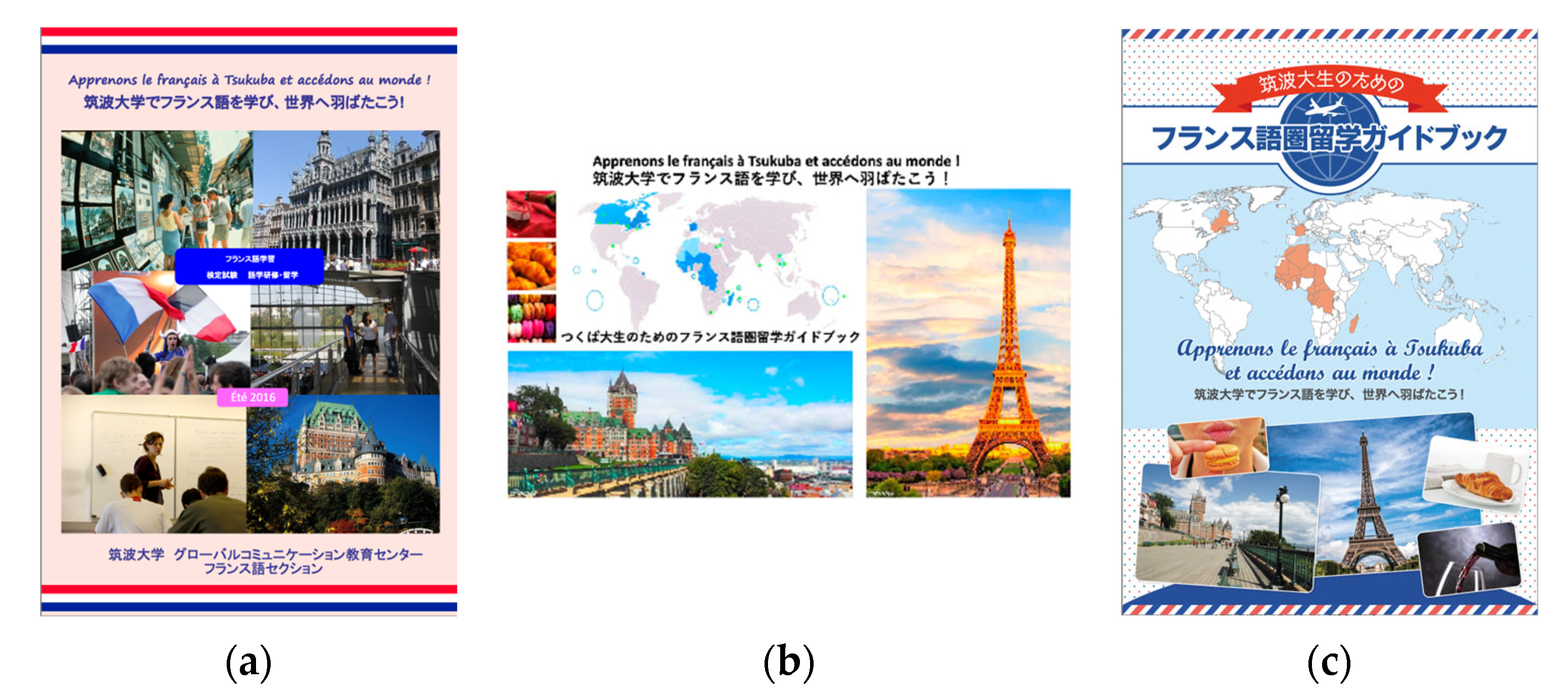
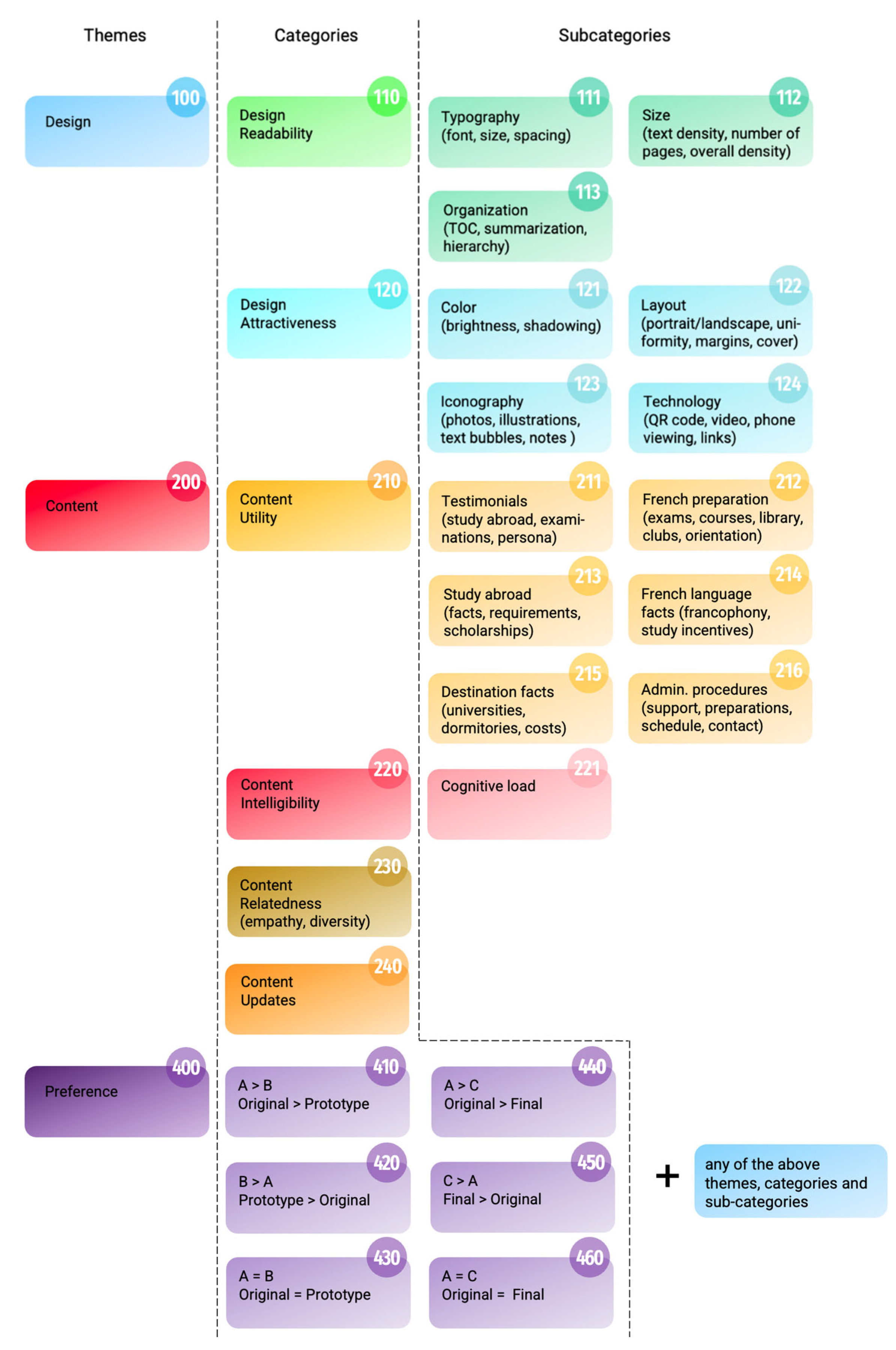
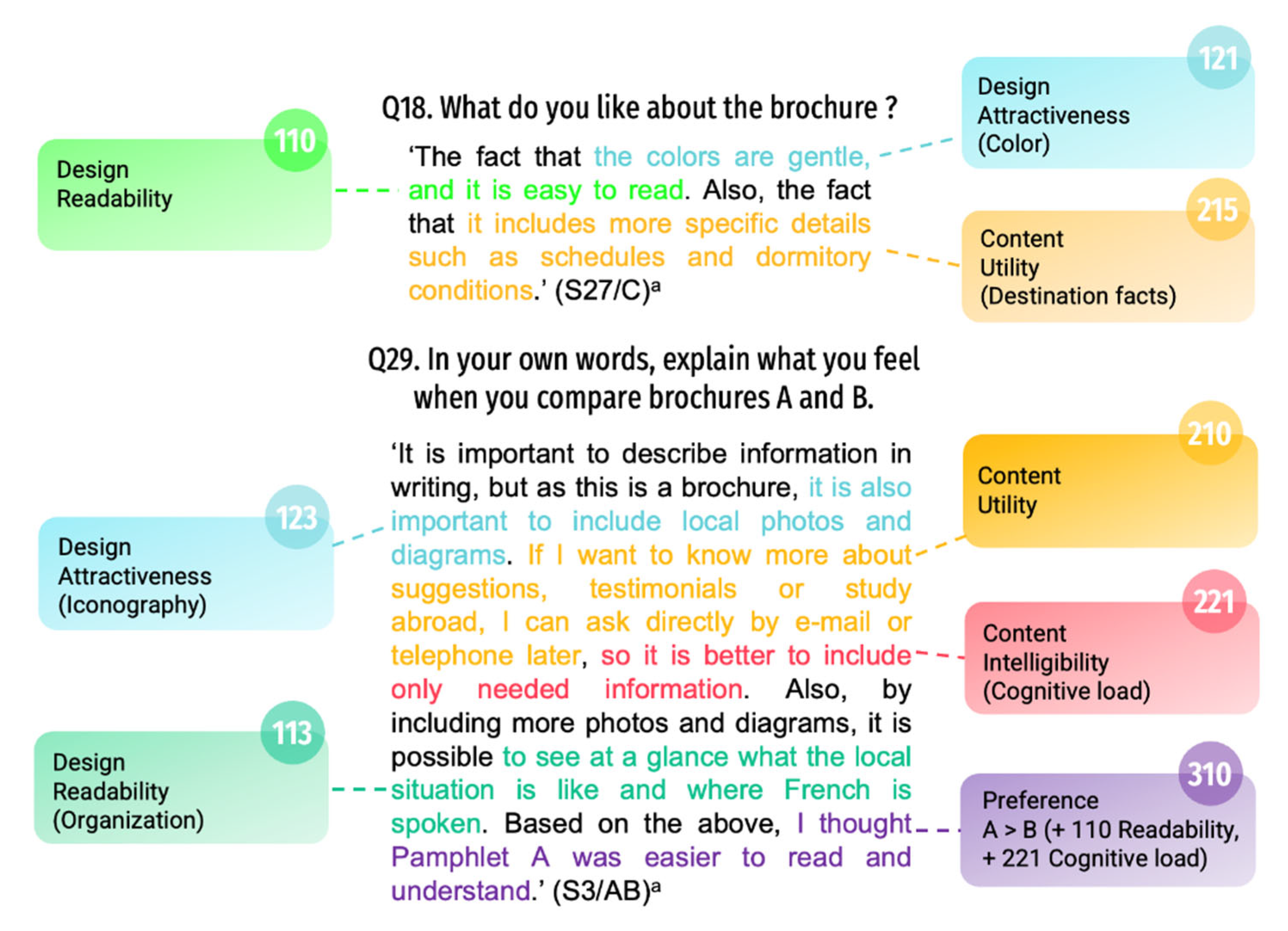
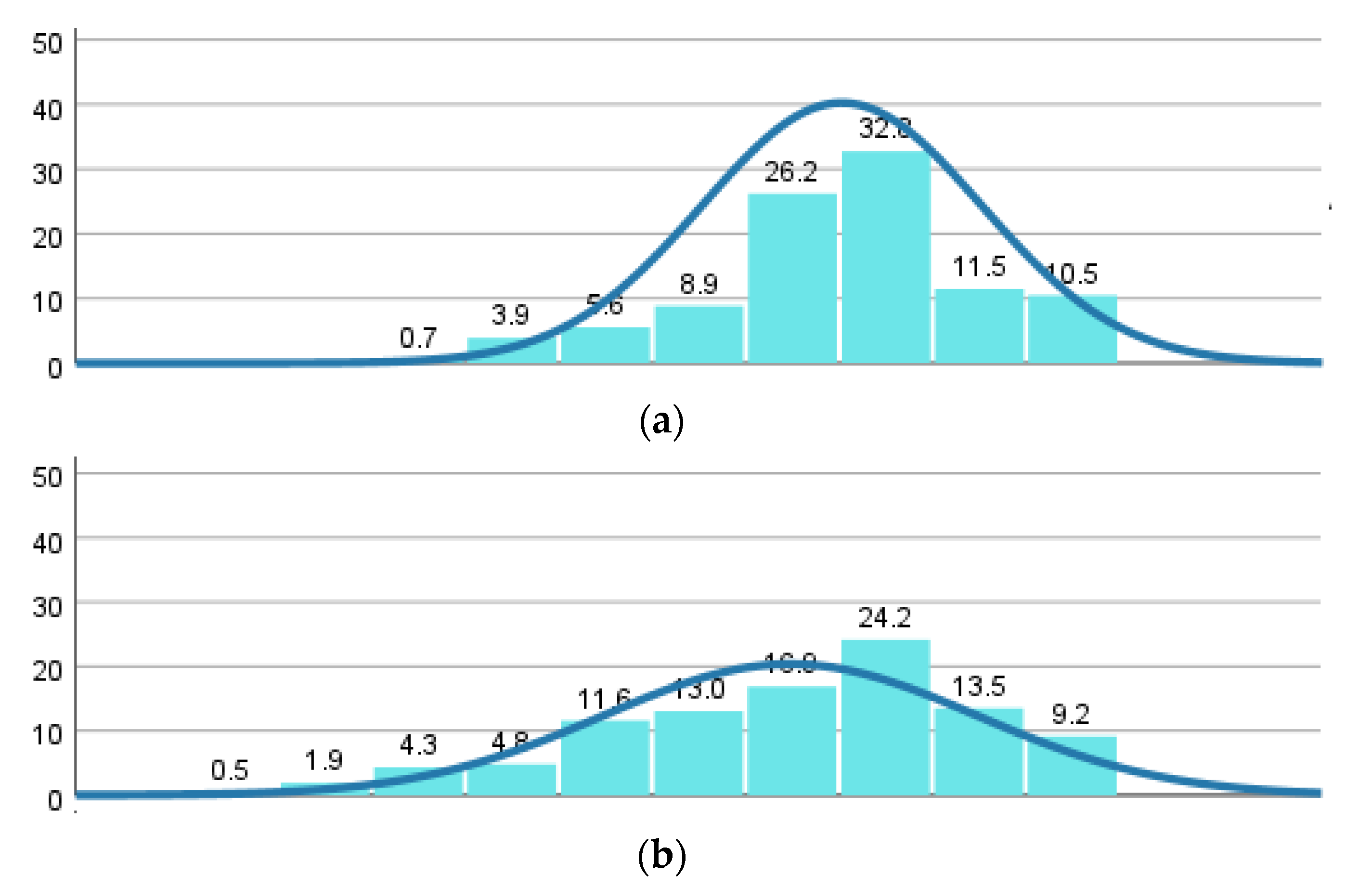
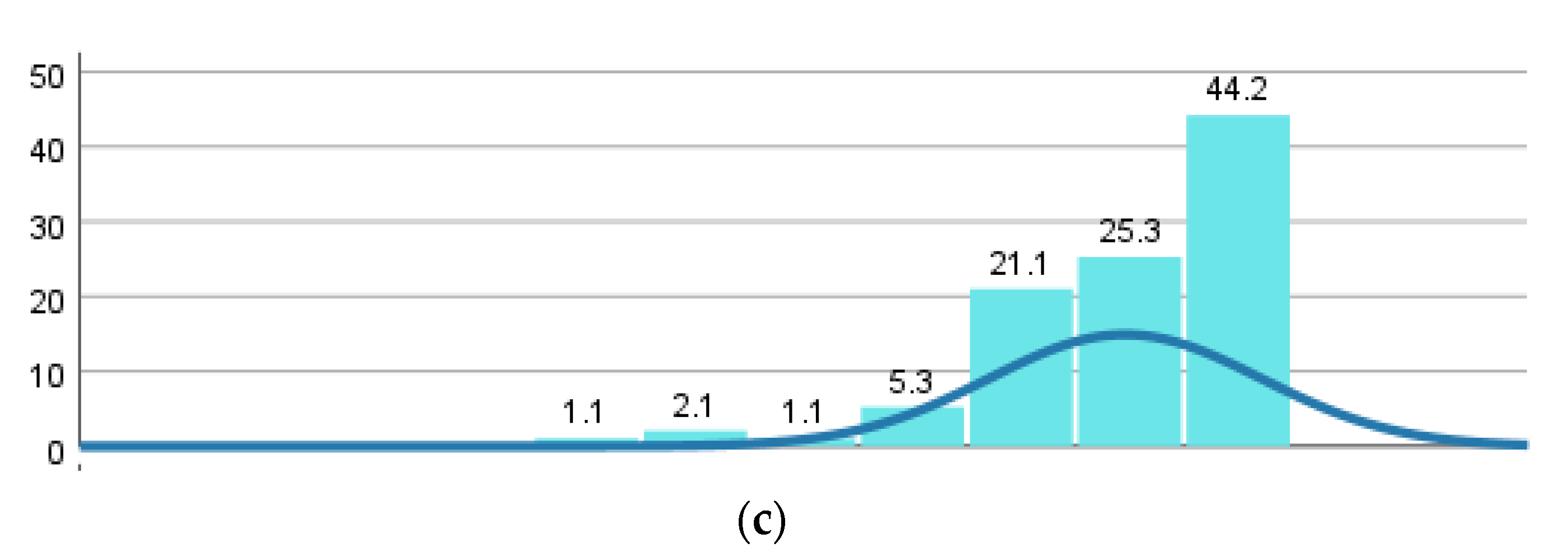
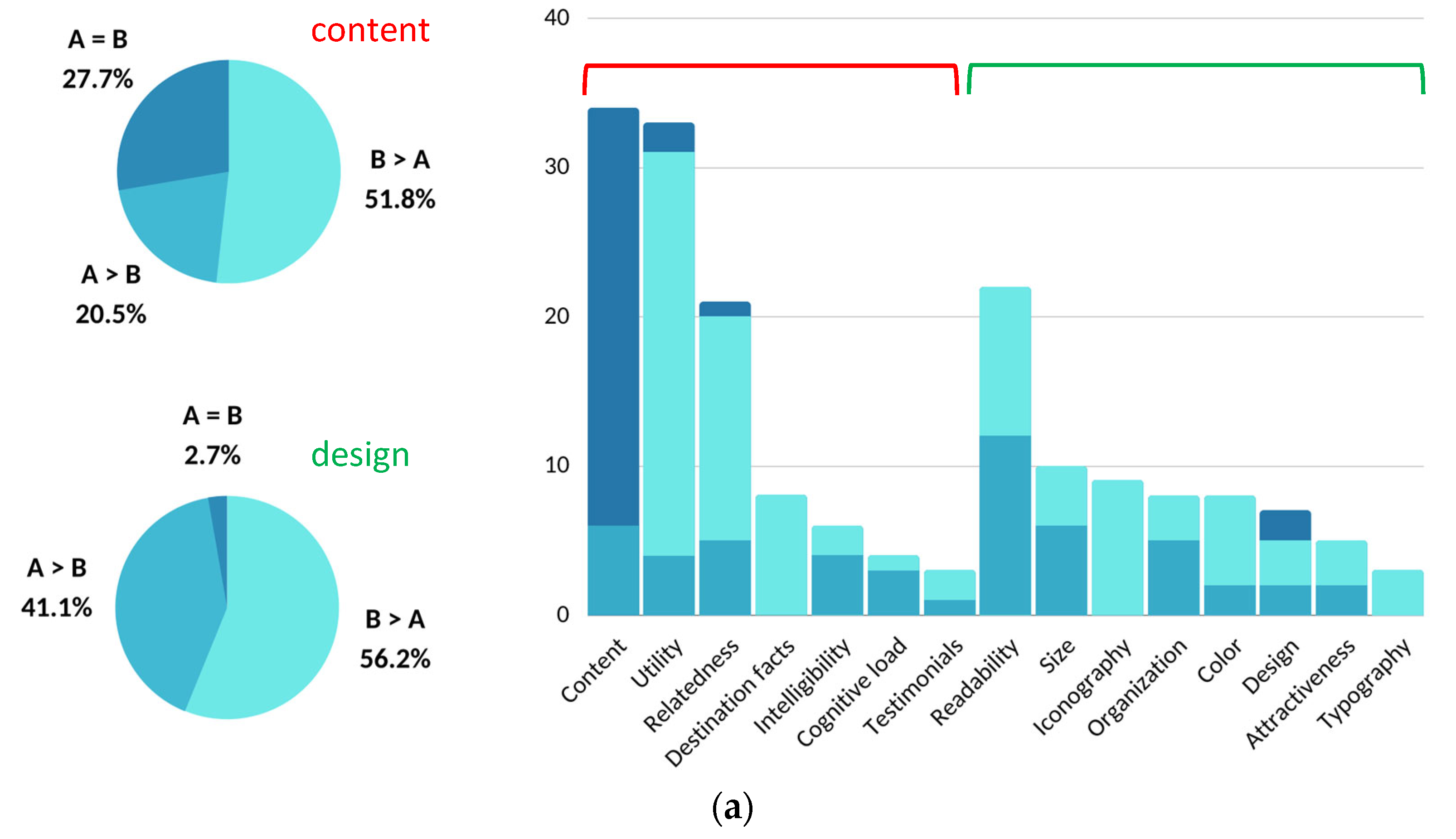
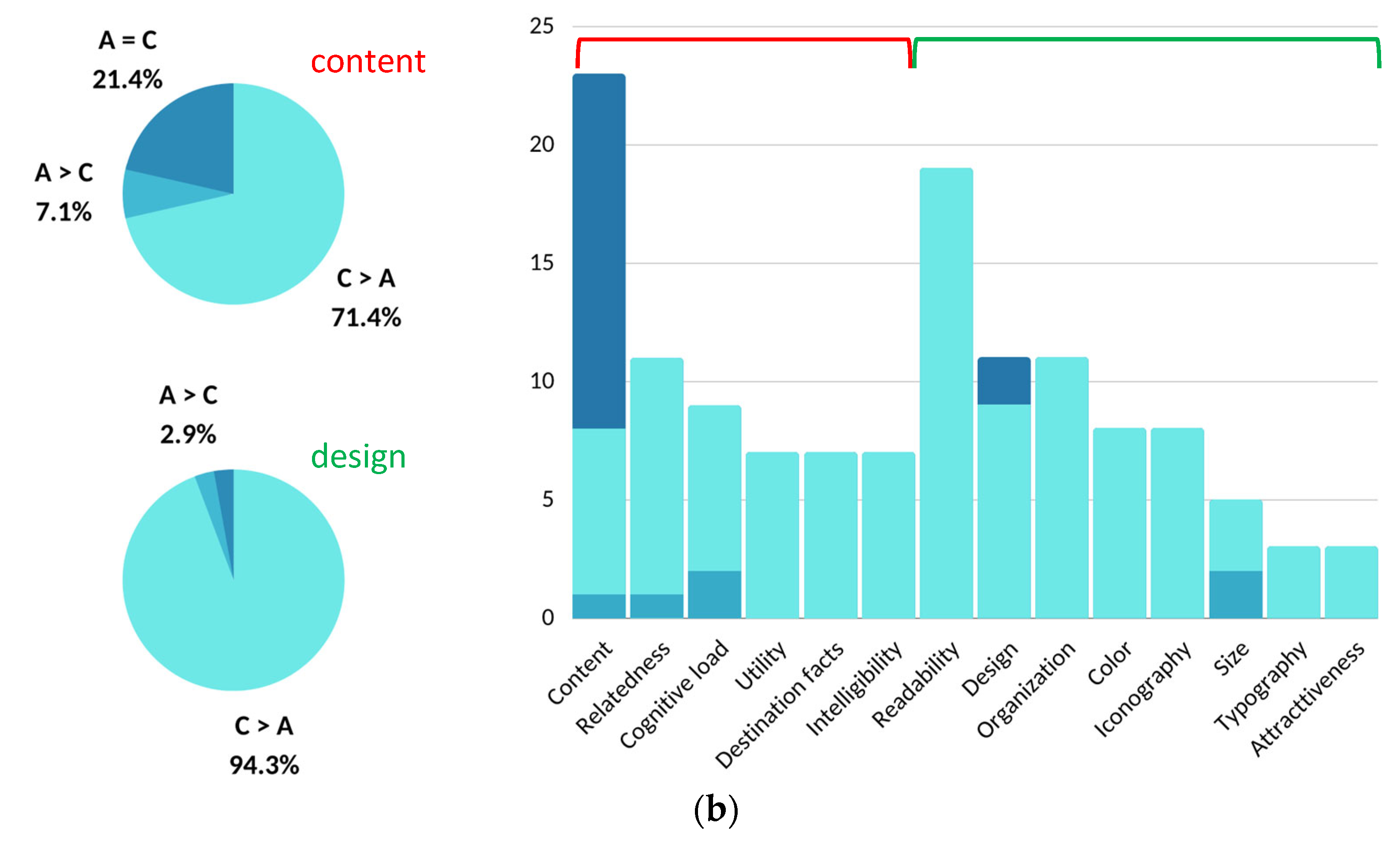
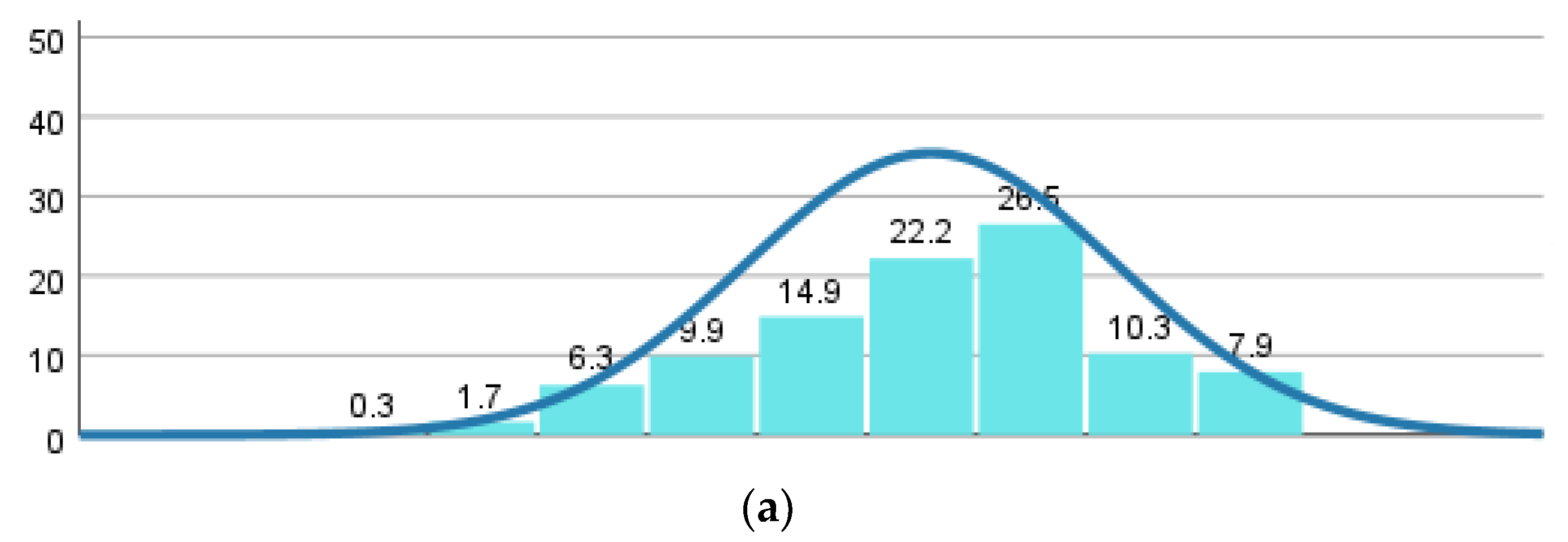
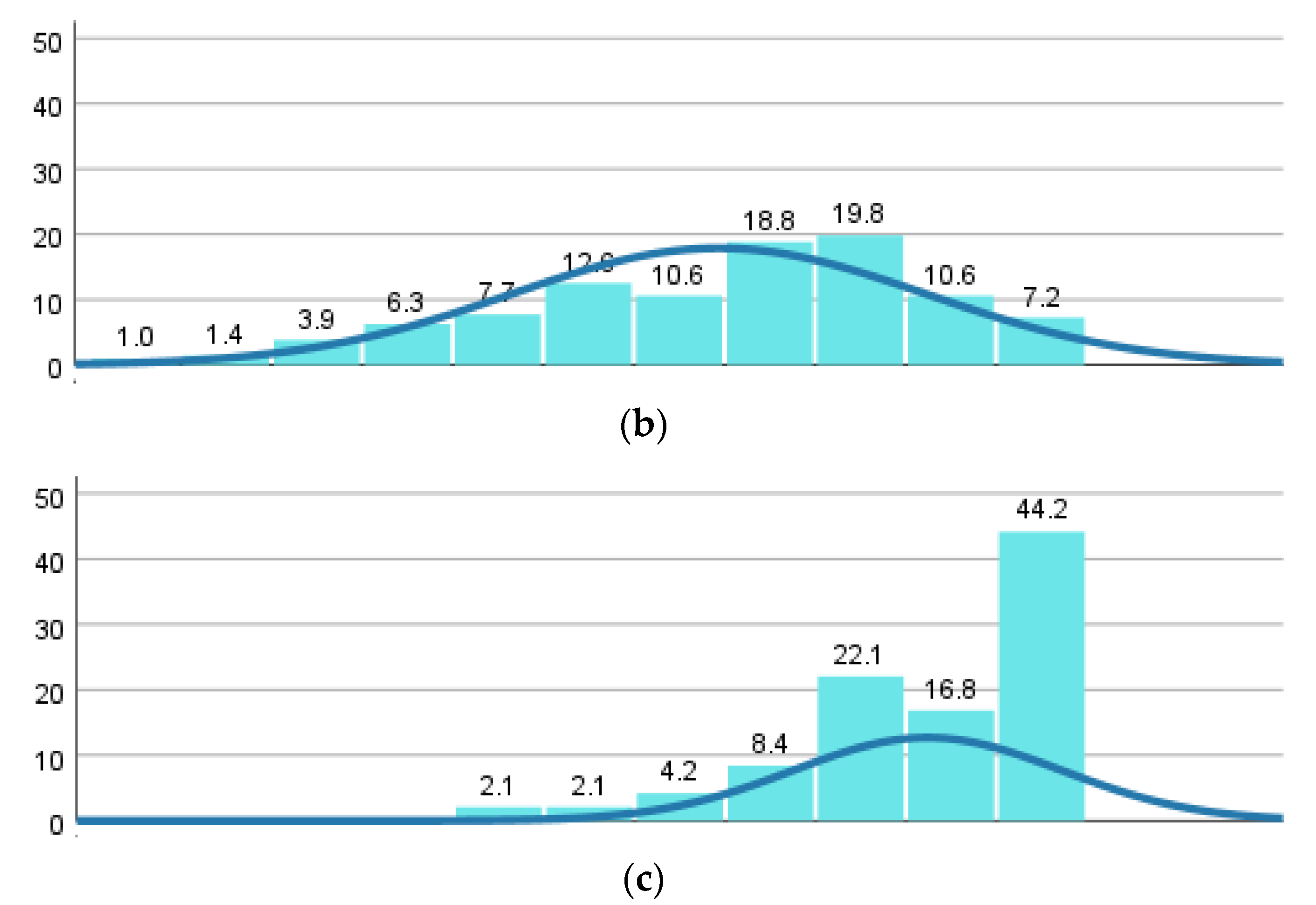
Disclaimer/Publisher’s Note: The statements, opinions and data contained in all publications are solely those of the individual author(s) and contributor(s) and not of MDPI and/or the editor(s). MDPI and/or the editor(s) disclaim responsibility for any injury to people or property resulting from any ideas, methods, instructions or products referred to in the content. |
© 2023 by the authors. Licensee MDPI, Basel, Switzerland. This article is an open access article distributed under the terms and conditions of the Creative Commons Attribution (CC BY) license (https://creativecommons.org/licenses/by/4.0/).
Share and Cite
Katsumata Shah, M.; Jactat, B.; Yasui, T.; Ismailov, M. Low-Fidelity Prototyping with Design Thinking in Higher Education Management in Japan: Impact on the Utility and Usability of a Student Exchange Program Brochure. Educ. Sci. 2023, 13, 53. https://doi.org/10.3390/educsci13010053
Katsumata Shah M, Jactat B, Yasui T, Ismailov M. Low-Fidelity Prototyping with Design Thinking in Higher Education Management in Japan: Impact on the Utility and Usability of a Student Exchange Program Brochure. Education Sciences. 2023; 13(1):53. https://doi.org/10.3390/educsci13010053
Chicago/Turabian StyleKatsumata Shah, Mahdi, Bruno Jactat, Toshiyuki Yasui, and Murod Ismailov. 2023. "Low-Fidelity Prototyping with Design Thinking in Higher Education Management in Japan: Impact on the Utility and Usability of a Student Exchange Program Brochure" Education Sciences 13, no. 1: 53. https://doi.org/10.3390/educsci13010053
APA StyleKatsumata Shah, M., Jactat, B., Yasui, T., & Ismailov, M. (2023). Low-Fidelity Prototyping with Design Thinking in Higher Education Management in Japan: Impact on the Utility and Usability of a Student Exchange Program Brochure. Education Sciences, 13(1), 53. https://doi.org/10.3390/educsci13010053








